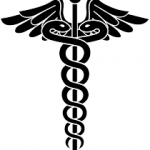Introduction:
When considering the domain of healthcare, taking care of patients with no apparent concerns
may appear uncomplicated; however, it confronts healthcare practitioners with distinctive
obstacles. Although these patients may not present obvious symptoms, it is still critical to
address and provide care for their health concerns and needs (Roy et al., 2020). The objective of
this article is to investigate the complications that accompany the management of patients who
do not lodge any complaints and to offer practical approaches that healthcare providers can
implement to guarantee their delivery of comprehensive care.
Knowledge of Patients Lacking Complaints:
We frequently divide non-complaining patients into two groups: those who are in good overall
health and those who may have dormant health conditions that have not yet presented indicators
(Edinger & Carney, 2014). Healthcare professionals must acknowledge that the absence of
complaints does not invariably indicate the attainment of optimal health. Uncertainty, cultural
beliefs, or the fear of criticism may discourage patients from overtly voicing their concerns.
Developing Intimacy and Trust:
The development of trust and rapport is of the utmost significance when interacting with
complaint-free patients. Create an inclusive atmosphere that fosters patients’ confidence in
divulging health-related details, regardless of their perception of the data as trivial or
unimportant. Demonstrate paying close attention, acknowledge and validate their experiences,
and provide reassurance that their welfare is your utmost concern. Establishing an enduring
rapport between a healthcare provider and a patient promotes candid dialogue and enables the
timely identification of possible ailments (Katz, 2002).
Comprehensive health evaluations:
Perform comprehensive health assessments on asymptomatic patients to identify any latent
health hazards or abnormalities. Compile exhaustive data through the utilization of screening
tools, physical examinations, and medical history reviews. It is crucial to be vigilant for subtle
indications and deviations from baseline health indicators, as these could potentially signify
health issues (Steinhubl et al., 2016). By adopting a proactive assessment approach, healthcare
professionals can identify and resolve concerns prior to their critical progression.
Advocating for Preventive Care:
Promote patient education regarding the relevance of preventive care and foster a culture of
proactive health management. Address the importance of consistent lifestyle modifications,
screenings, immunizations, and routine checkups in protecting overall health and well-being.
Enable patients to take responsibility for their health by providing resources, information, and
assistance that encourage healthy habits. Prevention is critical for both promoting longevity and
mitigating future medical issues.
Holistic medicine acceptance:
Embrace an integrated approach to healthcare that takes into account the interdependence of
one’s mental, physical, and emotional health. It is important to recognize that patients who do not
present with any complaints may still encounter psychological or emotional difficulties that have
an effect on their general state of health (Caplan, 2013). Provide a range of resources pertaining
to stress management, mental health support, and dietary advice in order to holistically address
these facets. Healthcare professionals can optimize patient outcomes and improve the overall
quality of life.
Efficient communication techniques:
Effectively and transparently communicate with patients in order to establish mutual
comprehension and congruence of objectives. To improve comprehension, use straightforward
language and avoid medical slang, especially when discussing intricate subjects or treatment
methods (Hersh et al., 2015). Encourage patient inquiry and active involvement in care-related
decision-making processes. Effective correspondence cultivates confidence, amplifies patient
involvement, and encourages compliance with therapy recommendations.
Leveraging technology and telemedicine:
Utilize telemedicine platforms and technological advancements to improve patient access to care
for complaint-free individuals. Provide digital health instruments, remote surveillance, and
virtual consultations to facilitate continuous interaction and health status monitoring. Make
efficient use of electronic medical records to monitor patient information, organize dates, and
coordinate multidisciplinary care teams (Janett & Yeracaris, 2020). Modern technologies
enhance comfort, accessibility, and satisfaction among patients during care delivery.
Collaborative coordination of care:
To ensure that patients receive comprehensive support and uninterrupted assistance without any
reported complaints, collaborative care coordination is essential. Cultivate alliances with fellow
healthcare providers, specialists, community resources, and support networks in order to fully
meet the varied requirements of patients. Incorporate interdisciplinary medical teams to
capitalize on specialized knowledge from different fields and customize treatment strategies to
suit each patient’s unique preferences and medical issues (Jones & Phillips, 2016). Healthcare
professionals can optimize outcomes and advance holistic health through collaboration.
Conclusion:
Obtaining patient satisfaction necessitates the implementation of an extensive plan that
incorporates proactive evaluation, preventative maintenance, efficient correspondence, and
holistic assistance (Organization, 2018). Healthcare providers can enhance overall well-being
and optimize health outcomes by adopting patient-centered care principles, recognizing the value
of early intervention, and advocating for preventive measures. Building trust, encouraging
transparent communication, and employing technology are critical approaches to delivering
high-quality treatment to complaint-free patients. By fostering collaboration and adhering to a
patient-centered care procedure, healthcare providers have the ability to enable individuals to
place a higher value on their health and experience greater satisfaction in their lives.
Reference:
Caplan, G. (2013). An approach to community mental health. Routledge.
Edinger, J. D., & Carney, C. E. (2014). Overcoming insomnia: A cognitive-behavioral therapy
approach, therapist guide. Oxford University Press.
Hersh, L., Salzman, B., & Snyderman, D. (2015). Health literacy in primary care practice.
American family physician, 92(2), 118-124.
Janett, R. S., & Yeracaris, P. P. (2020). Electronic Medical Records in the American Health
System: challenges and lessons learned. Ciencia & saude coletiva, 25, 1293-1304.
Jones, B., & Phillips, F. (2016). Social work and interprofessional education in health care: A call
for continued leadership. Journal of Social Work Education, 52(1), 18-29.
Katz, J. (2002). The silent world of doctor and patient. Jhu Press.
Organization, W. H. (2018). Continuity and coordination of care: a practice brief to support
implementation of the WHO Framework on integrated people-centred health services.
Roy, D., Tripathy, S., Kar, S. K., Sharma, N., Verma, S. K., & Kaushal, V. (2020). Study of
knowledge, attitude, anxiety & perceived mental healthcare need in Indian population during
COVID-19 pandemic. Asian journal of psychiatry, 51, 102083.
Steinhubl, S. R., Feye, D., Levine, A. C., Conkright, C., Wegerich, S. W., & Conkright, G. (2016).
Validation of a portable, deployable system for continuous vital sign monitoring using a
multiparametric wearable sensor and personalised analytics in an Ebola treatment centre. BMJ
global health, 1(1), e000070.




